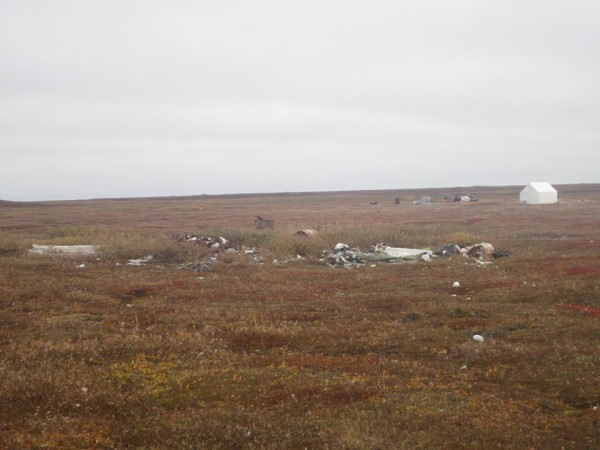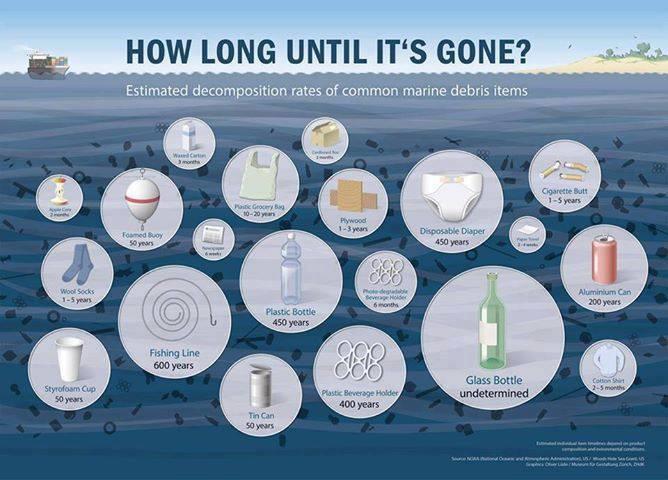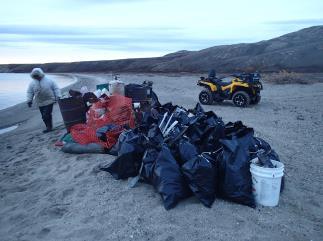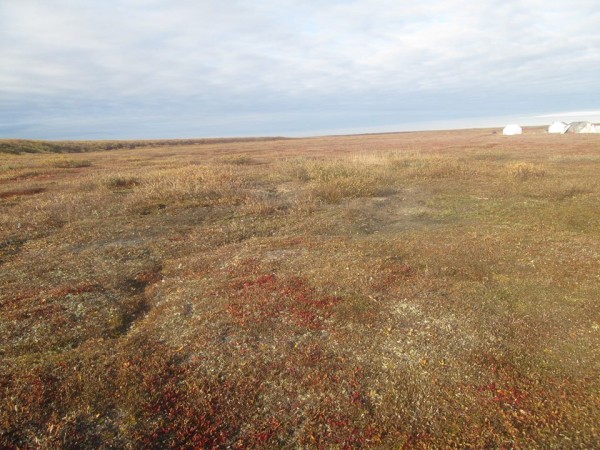Partnering for “Clean Camps, Clean Coasts” in the Arctic
This September, community members of two western Canadian Arctic communities – Paulatuk and Tuktoyaktuk – took to the shores of the Beaufort Sea for the first ever “Clean Camps, Clean Coasts” events.
These communities actively use the lands, waters, and coastline for subsistence harvesting of country food – including caribou, marine mammals, waterfowl, fish, and berries. Different country foods are harvested at different times of the year, from different sites along the coast and at traditional camps.
Subsistence harvesting in remote areas can present challenges for waste management in these areas, which are often in or adjacent to significant wildlife habitat. As such, there is a concern within the communities about the amount of waste that has accumulated in certain areas, and its potential impact of wildlife, as well as the water and the general aesthetic of the land. Managing this waste and cleaning up sites in these remote areas is challenging – logistics are tricky, and it can be expensive.
“Clean Camps, Clean Coasts” was a collaborative initiative between WWF-Canada and the Paulatuk and Tuktoyaktuk Hunters and Trappers Committees (HTCs) within the Inuvialuit Settlement Region, and was funded by a number of partners, including Environment Canada. The community organizations in Paulatuk commented that “the community takes pride in our land and our subsistence traditions, and see this program as securing our lands, animals, and habitats for future generations”.
Working on the Ground
In Tuktoyaktuk, the HTC used the program funds to hire a local coordinator and five workers. They spent a week in the nearby Tuktoyaktuk Harbor and at Hendrickson Island, the coastal camp that is the base for much of the community’s marine activity through the summer. Besides the bulk items that were removed – including oil drums, skidoo parts, and older building structures – the workers collected over 150 bags of garbage from the harbor alone. This included a huge number of bottles, cans, styrofoam cups, and fish nets. Lots of single-use bags were collected, and since these bags were banned in the community over 4 years ago, we hope they won’t return to litter the landscape again in the future.
In Paulatuk, the HTC hired a coordinator and five labourers for the shoreline cleanup project, supported by several youth and community volunteers. The clean-up focused on Fred Matthews Lake, George Creek, and shoreline east of community. It required coordinating ATVs, boats, and labourers to move the waste over land and water from the remote camps and coastline, to the community’s waste management site.
Working together for a cleaner Arctic
These cleanups were big tasks and we were very happy to partner with the HTCs. Their on-the-ground leadership showed that how effective these partnerships can be, and how beneficial environmental programs can be for communities – not only are the camps and coasts cleaner, several local residents were employed through the program and youth had a chance to get involved. We hope that it builds momentum for future programs and cleanups in the other communities.
In the next few weeks, I will return to the Paulatuk and Tuktoyaktuk to host community workshops to develop waste management strategy, and design, develop, and distribute educational materials and supplies to engage and enable community members to clean up waste in the camps and environment. Stay tuned for more stories of Arctic cleanups!






